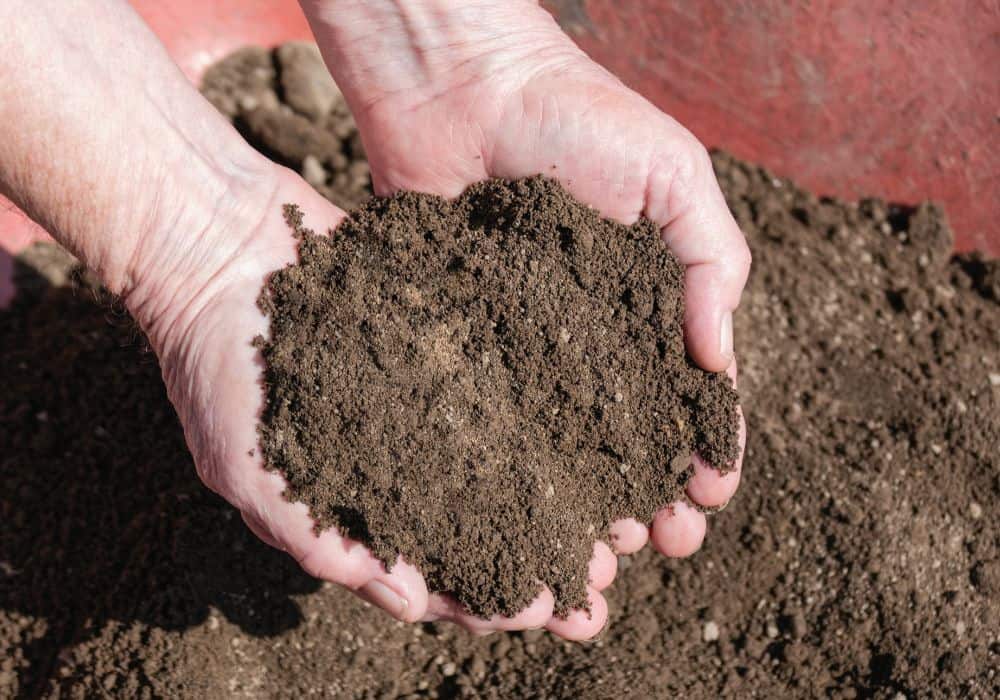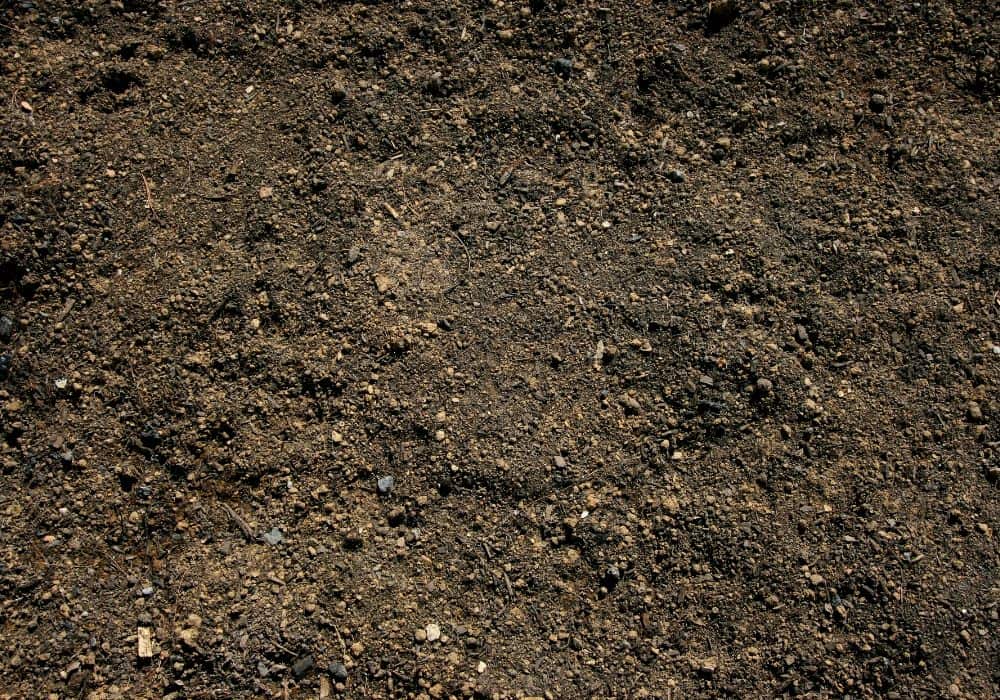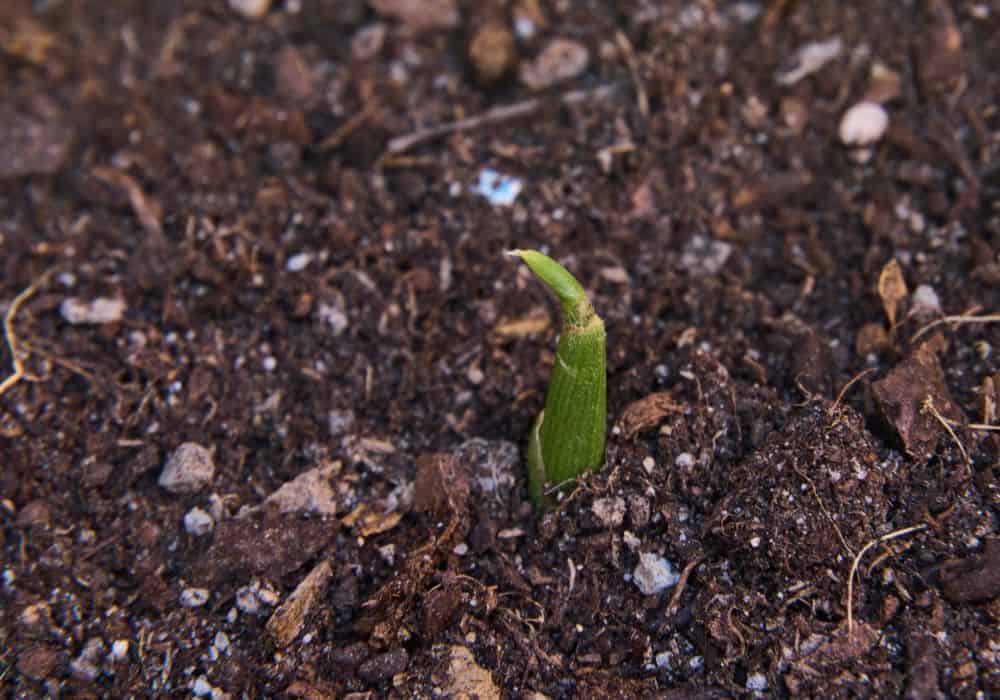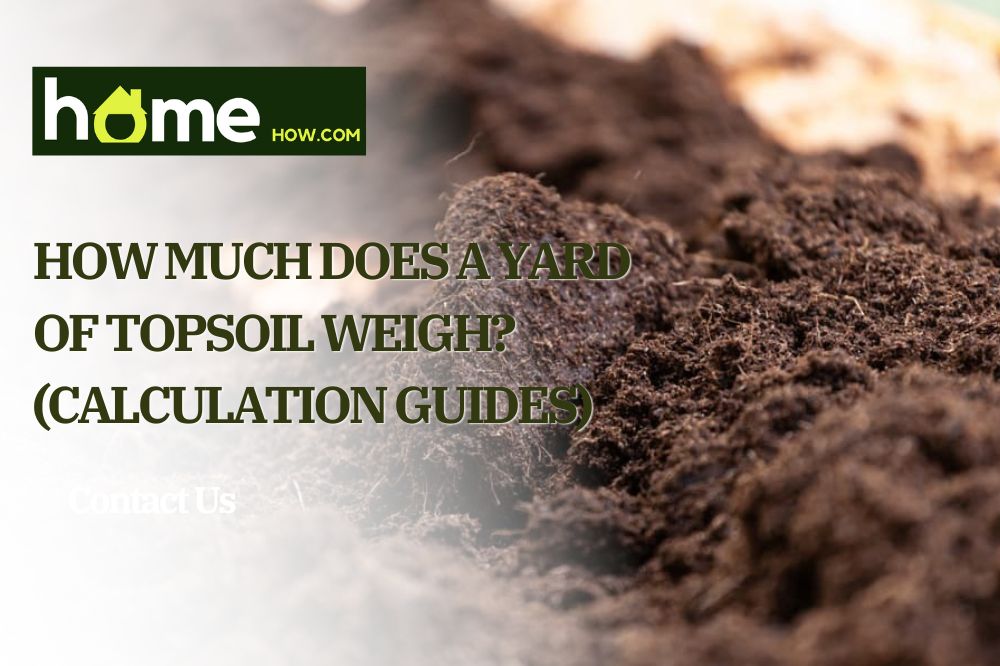We know that proper soil preparation is key to a successful garden, and one of the most vital steps in preparing your soil is adding topsoil.
But how much does a yard of topsoil weigh? And how do you know how much you need? Keep reading to find out!
What Is Topsoil?
Most people have a general idea of what soil is, but there tends to be a bit less understanding when it comes to topsoil.
Simply put, topsoil is the top layer of the earth’s surface and is composed of clay, silt, sand, and organic materials. It also includes minerals such as magnesium, nitrogen, and phosphorus.
This rich mixture of materials is essential for plant growth. It provides nutrients and regulates oxygen levels, as well as playing an essential role in preventing erosion because it helps to anchor roots and deflect wind and water.
Topsoil also has good drainage and aeration properties, making it ideal for use in gardens and lawns.
It’s no wonder that topsoil is often referred to as the “gold standard” for gardening. While it can be tricky to find high-quality topsoil, it is definitely worth the effort. After all, healthy plants start with healthy soil.
40-pound bags of topsoil are the most common size of topsoil sold in stores. This is because they are a manageable size for most people to carry, and they are large enough to cover a decent-sized area.
One 40-pound bag will cover approximately 10 square feet with a layer of topsoil that is 3 inches deep. Topsoil is essential for Gardens because it helps with drainage, provides essential nutrients, and aids in weed prevention.
For these reasons, it is crucial to choose the right type and size of topsoil for your needs. A 40-pound bag of topsoil should be sufficient for most gardening projects.
How Much Does A Yard Of Topsoil Weigh?
It’s essential to be knowledgeable about much topsoil you need when you’re planning a gardening or landscaping project. So, how much does a yard of soil weigh? The weight of a cubic yard of topsoil is typically between 1,500 and 3000 lbs.
However, the weight can vary depending on the type of topsoil and the moisture, debris, and rocks it may contain. If you’re buying topsoil by truckload, keep in mind that a cubic yard equals 27 cubic feet.
With that said, a yard of topsoil is a lot of soil. It will cover approximately 100 square feet with a depth of 3 inches.
Topsoil is relatively inexpensive, and it’s easy to find at garden centers and nurseries. Here are a few things to take into consideration when it comes to the weight of topsoil.
1. The moisture levels

Many people are surprised to learn that moisture content can have a big impact on the overall weight of topsoil. When the soil is wet, it can actually be up to twice as heavy as dry topsoil.
A cubic yard of wet topsoil can weigh around 3000 lbs, whereas a cubic yard of dry topsoil will weigh around 1500 to 2000 lbs. So, if you’re trying to measure the weight of topsoil, it’s important to do it on a dry day.
This is because water molecules bind to soil particles, making them larger and heavier. Wet topsoil is also more difficult to shovel and maneuver, which can make gardening and landscaping tasks more challenging.
In addition, wet topsoil is more likely to compact, which can damage plant roots and make it difficult for new seedlings to take hold. For these reasons, it’s important to be aware of how moisture can affect the weight of topsoil.
Too much moisture can create problems, but so can too little. By monitoring the moisture levels in your soil, you can help ensure that your plants stay healthy and your garden stays beautiful.
2. Components
The components and composition of the topsoil you have can affect how much it weighs. For example, sandy soil weighs more than clay soil because it has more sand particles.
The amount of organic matter in the soil can also affect weight. Soil with a higher organic matter content will weigh more than soil with a lower organic matter content.
The amount of compaction in the soil can also affect weight. Soils that are more compacted will weigh more than soils that are less compacted. It is important to take them into account when determining how much topsoil to use for your project.
3. Blended or straight
Most people think of topsoil as being a heavy, dense material. However, when it’s blended with wood chips, the topsoil actually becomes lighter in weight.
This is due to the fact that wood chips take up more space than topsoil particles. As a result, there is less actual topsoil per cubic foot of blended soil, so you may need to buy more than you would straight topsoil to get the same coverage.
Calculating How Much Topsoil You’ll Need

If you’re looking to add topsoil to your garden beds or raised garden, knowing how much you’ll need is essential.
To determine the number of cubic yards of topsoil you need, you’ll need to know the depth, width, and length of the area you’re planning to cover.
When you have the measurements of your area, just multiply them together. One example, if you’re looking to add topsoil to an area that is 10′ long, 10′ wide, and 3″ deep, you would need 300 cubic feet of topsoil.
To calculate how many yards of topsoil this is, simply divide by 27 (the number of cubic feet in a yard). In this case, you would need 11 yards of topsoil.
Knowing how much topsoil you need will help ensure that your garden beds are properly filled and ready for planting. If you are still not sure how much topsoil you need, it is best to err on the side of caution and order more.
Can you use an online topsoil calculator?
Yes! Using an online topsoil calculator is a handy way to measure your topsoil. These online calculators will ask you for information about your gardens, such as the type of plants you’re growing and the size of your garden bed.
Based on this information, they’ll recommend a type of topsoil that will be best for your needs. Another option is to talk to a local gardening expert who can help you choose the suitable topsoil for your garden.
Whichever method you choose, make sure you take the time to select the right topsoil for your plants – it can make all the difference in their health and growth!
Transporting Your Topsoil

If you’re planning on transporting cubic yards of topsoil, there are a few things you should know. First of all, it will take up a lot of space, so you’ll need to choose a vehicle that can accommodate it.
A small dump truck or a full-size pickup truck should do the trick. Also, remember that topsoil is very heavy. This means that you’ll need to take care when loading and unloading it, as well as when driving. Make sure to take breaks often and drive slowly to avoid accidents.
And finally, be aware that transporting large quantities of topsoil can be messy. Cover your truck bed with a tarp to prevent the soil from spilling out and making a mess. With these tips in mind, transporting cubic yards of topsoil should be a breeze!
How can I transport my topsoil around the garden or project area?
You can use a wheelbarrow to transport topsoil once you have it at its location. This is a common method for moving soil around the garden, and it’s relatively easy to do.
Just scoop the topsoil into the wheelbarrow and then wheel it to where it needs to be. Be careful not to spill any soil while you’re transporting it, as this can make a mess.
When you’re finished, simply dump the topsoil out of the wheelbarrow and into the desired location. Repeat as needed until all of the topsoils has been moved.
Conclusion
So there you have it, the average weight of a yard of topsoil is between 1500 and 3000 pounds. However, remember the weight changes based on the ingredients in your topsoil and how densely packed it is.
Hopefully, this article helped answer your question. If not, or if you have any questions, please let us know in the comments. We’re always happy to help where we can!
